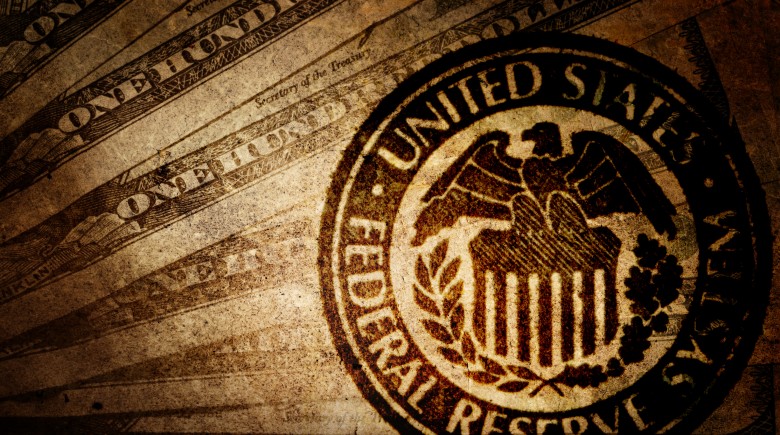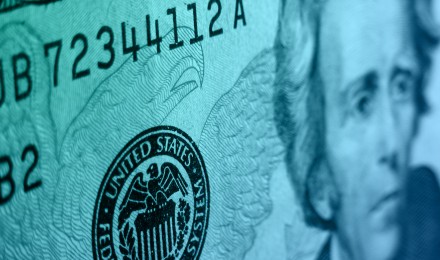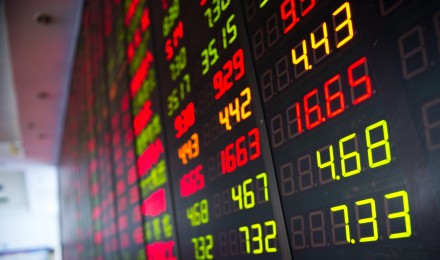I say that there is plenty of blame to go around, but hey, I don’t particularly like either plan, so maybe I’m biased. There are people (thankfully?) that pay close attention to these matters however and there arguments are compelling. Ok, compelling is a difficult word to utilize when discussing monetary policy — maybe persuasive is a bit more accurate. The current line of thinking, as can be seen on CNBC and other places where “analysts” jump in front of cameras, is that the QE (quantitative easing) programs have artificially kept rates low as the Fed buys massive amount of the U.S. bond inventory for itself. (Note: for those of you not following these matters closely, yes, that does essentially mean that the government “borrows” money from itself and then spends that money elsewhere. The sheer inanity of the idea seems to many to be the part that they admire most in the program). Anyway, there are some in the investment world that claim that the QE programs actually do the precise opposite and in fact, cause interest rates to rise. And they are not without facts to back them up:
So far there have been three versions of QE, entailing huge Fed purchases of T-Bond as well as mortgage-backed securities (MBS). QE-1 was formally adopted in March 2009, when the U.S. T-Bond yield was 2.53%, but by the end of QE-1, in March 2010, the yield had moved up to 3.83%, for a rise of 1.3% points. When the Fed launched QE-2 in November 2010 the T-Bond yield was 2.62%, but 3.16% when QE-2 was ended in June 2011 – a rise of 0.5% points. As mentioned, QE-3 began at the end of 2012, when the T-Bond yield was 1.76%, but now it is 2.20% – higher by 0.44% points. Obviously, QE-1 didn’t lower the T-Bond yield; on the contrary, it contributed in some way to higher yields. So also with QE-2 and Q-3.
And on the other side of the coin they demonstrate that when the QE programs took a breather, rates actually went down. Of course it can be argued that any pause in QE was never taken seriously by Wall Street to begin with, but that is a subject for another day. Plus, the main point of the piece is something that almost everyone can agree on, namely that the ZIRP (zero interest rate policy) is primarily to blame for any artificially low rates. While the Fed’s ZIRP may be most often thought of as a way to help the “too big to fail” banks get on their feet, it naturally was felt that the policy would help the economy in general. And it is undeniably hard to argue that the end of ZIRP would indeed be bad news for bond bulls:
The potential for a sustained and material bust in T-Bonds (steadily rising yields) comes not from the end of QE-3 per se, but rather from the potential end of ZIRP.
But really, aren’t QE and ZIRP tied together at the hip. Yes, the numbers make a persuasive case that they are indeed separate and distinct entities. However, I think the flaw here is really in the big picture of the policies. Once the tapering (the Fed’s slowing of it’s buying of its own bonds) begins, there is a strong implication that the end of ZIRP is nigh. In the Fed’s own words, they indicate that QE will end when certain economic indicators have been met. How does that differ from its interest rate setting policy? If there is a difference it is by a sliver. And further, to defend the TV analysts (this might be a first for me!) I think that most of them are thinking the same thing. I am not saying that they shouldn’t be aware of the facts above (if they are not), but I think that most (but definitely not all) of their prognostications on the matter imply an inclusion of the end of the zero interest rate policy. It is absolutely interesting and counterintuitive that the QE programs may be causing rates to rise. It just seems to be very difficult to separate the two programs (QE and ZIRP) when it comes to the overall goals of the Fed. And with the Fed still actively involved in these programs for the foreseeable future, I guess we will get a chance to accumulate much more data to see if these results hold. For good or ill.
I say that there is plenty of blame to go around, but hey, I don’t particularly like either plan, so maybe I’m biased. There are people (thankfully?) that pay close attention to these matters however and there arguments are compelling. Ok, compelling is a difficult word to utilize when discussing monetary policy — maybe persuasive is a bit more accurate. The current line of thinking, as can be seen on CNBC and other places where “analysts” jump in front of cameras, is that the QE (quantitative easing) programs have artificially kept rates low as the Fed buys massive amount of the U.S. bond inventory for itself. (Note: for those of you not following these matters closely, yes, that does essentially mean that the government “borrows” money from itself and then spends that money elsewhere. The sheer inanity of the idea seems to many to be the part that they admire most in the program). Anyway, there are some in the investment world that claim that the QE programs actually do the precise opposite and in fact, cause interest rates to rise. And they are not without facts to back them up:
So far there have been three versions of QE, entailing huge Fed purchases of T-Bond as well as mortgage-backed securities (MBS). QE-1 was formally adopted in March 2009, when the U.S. T-Bond yield was 2.53%, but by the end of QE-1, in March 2010, the yield had moved up to 3.83%, for a rise of 1.3% points. When the Fed launched QE-2 in November 2010 the T-Bond yield was 2.62%, but 3.16% when QE-2 was ended in June 2011 – a rise of 0.5% points. As mentioned, QE-3 began at the end of 2012, when the T-Bond yield was 1.76%, but now it is 2.20% – higher by 0.44% points. Obviously, QE-1 didn’t lower the T-Bond yield; on the contrary, it contributed in some way to higher yields. So also with QE-2 and Q-3.
And on the other side of the coin they demonstrate that when the QE programs took a breather, rates actually went down. Of course it can be argued that any pause in QE was never taken seriously by Wall Street to begin with, but that is a subject for another day. Plus, the main point of the piece is something that almost everyone can agree on, namely that the ZIRP (zero interest rate policy) is primarily to blame for any artificially low rates. While the Fed’s ZIRP may be most often thought of as a way to help the “too big to fail” banks get on their feet, it naturally was felt that the policy would help the economy in general. And it is undeniably hard to argue that the end of ZIRP would indeed be bad news for bond bulls:
The potential for a sustained and material bust in T-Bonds (steadily rising yields) comes not from the end of QE-3 per se, but rather from the potential end of ZIRP.
But really, aren’t QE and ZIRP tied together at the hip. Yes, the numbers make a persuasive case that they are indeed separate and distinct entities. However, I think the flaw here is really in the big picture of the policies. Once the tapering (the Fed’s slowing of it’s buying of its own bonds) begins, there is a strong implication that the end of ZIRP is nigh. In the Fed’s own words, they indicate that QE will end when certain economic indicators have been met. How does that differ from its interest rate setting policy? If there is a difference it is by a sliver. And further, to defend the TV analysts (this might be a first for me!) I think that most of them are thinking the same thing. I am not saying that they shouldn’t be aware of the facts above (if they are not), but I think that most (but definitely not all) of their prognostications on the matter imply an inclusion of the end of the zero interest rate policy. It is absolutely interesting and counterintuitive that the QE programs may be causing rates to rise. It just seems to be very difficult to separate the two programs (QE and ZIRP) when it comes to the overall goals of the Fed. And with the Fed still actively involved in these programs for the foreseeable future, I guess we will get a chance to accumulate much more data to see if these results hold. For good or ill.







